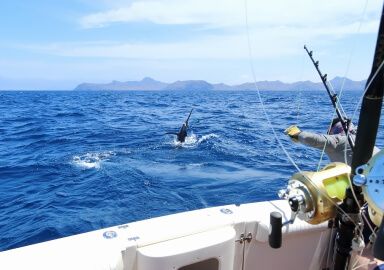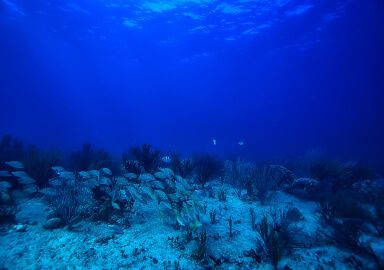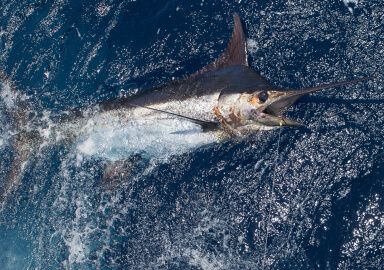Striped Marlin
The striped marlin is a large and energetic top predator and game fish of the open waters of the Indian and Pacific Oceans.
View 77 listings
77
listings
–
price starting from
10
countries
–
to the nearest trip
Where and When?
Striped marlin are distributed in most temperate, sub-tropical and tropical regions of the Indian and Pacific Oceans. They prefer ocean temperatures of 20 to 25 degrees centigrade and undertake annual winter migrations towards the equator in both the northern and southern hemispheres. They rarely approach land, except where there is very deep water close inshore, and striped marlin abundance generally increases with distance from the continental shelf. They stay mostly close to the surface and rarely go below 100 meters. They seem to prefer generally cooler waters than blue and black marlin but are sometimes found in the same areas, such as off South Africa’s north eastern shore. Although they have a wide distribution they are much more common in certain known areas and fishing for them is thus concentrated in a few specific areas. Cabo San Lucas in Mexico, Sodwana Bay in South Africa and various areas off the New Zealand shore are well known striped marlin fishing destinations. Warmer areas of their range are generally much more productive in winter and only daylight fishing will usually produce results.
About Striped Marlin
Striped marlin (Kajikia audax) are a large, but not the largest, marlin species. They have the typical torpedo shaped “marlin” body with a longish but fairly slender bill. They are blue in the upper parts of the body blending into almost white below with a series of several vertical darker blue stripes down the body, hence the fish’s name. The species can be extremely energetic and very fast moving after being hooked. They can attain a maximum recorded length of 420 centimeters (13.8 ft.), with a more common size of around 290 centimeters (9.5 ft.). The maximum weight is around 200 kilograms (220 lbs) which they can attain in about 20 years of life. They are generally a surface loving offshore species and a top daylight predator on many species of fish and occasionally squid. They are usually solitary but can form smallish same-sized aggregations during spawning time. Female striped marlin can be extremely fecund producing in excess of 500 000 eggs per spawning.
How to Catch?
Virtually all striped marlin are caught from boats and, most often, fairly far from the shore. The fish are usually thinly spread and so trolling, mostly with artificial lures, is a good way to cover large areas in search of individual or loose groups of striped marlin. Medium strength, conventional tackle is usually used but, if the dorsal fin of a striped marlin is seen approaching a trolled bait, a natural bait such as a mackerel can be cast out in front of the fish. White marlin usually smash into the bait with their bill and then engulf the bait and so watching a striped marlin take a bait can be exciting and stressful. The use of circle hooks increases the chance of hooking, and landing, a striped marlin and also increases the likelihood of a released fish surviving. Once hooked, striped marlin have a well- deserved reputation for repeatedly leaping high into the air and providing a thrilling and very memorable fight.












